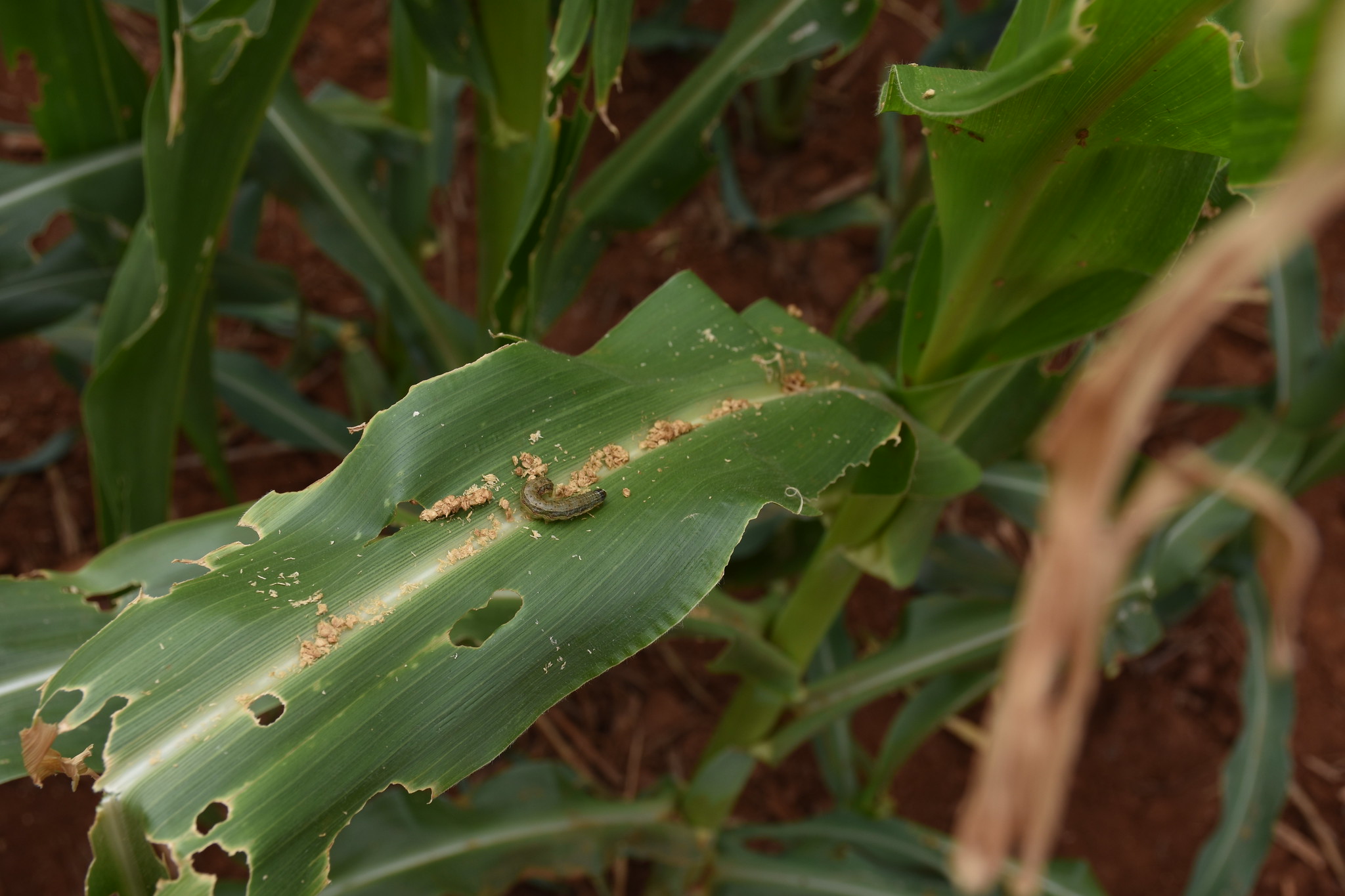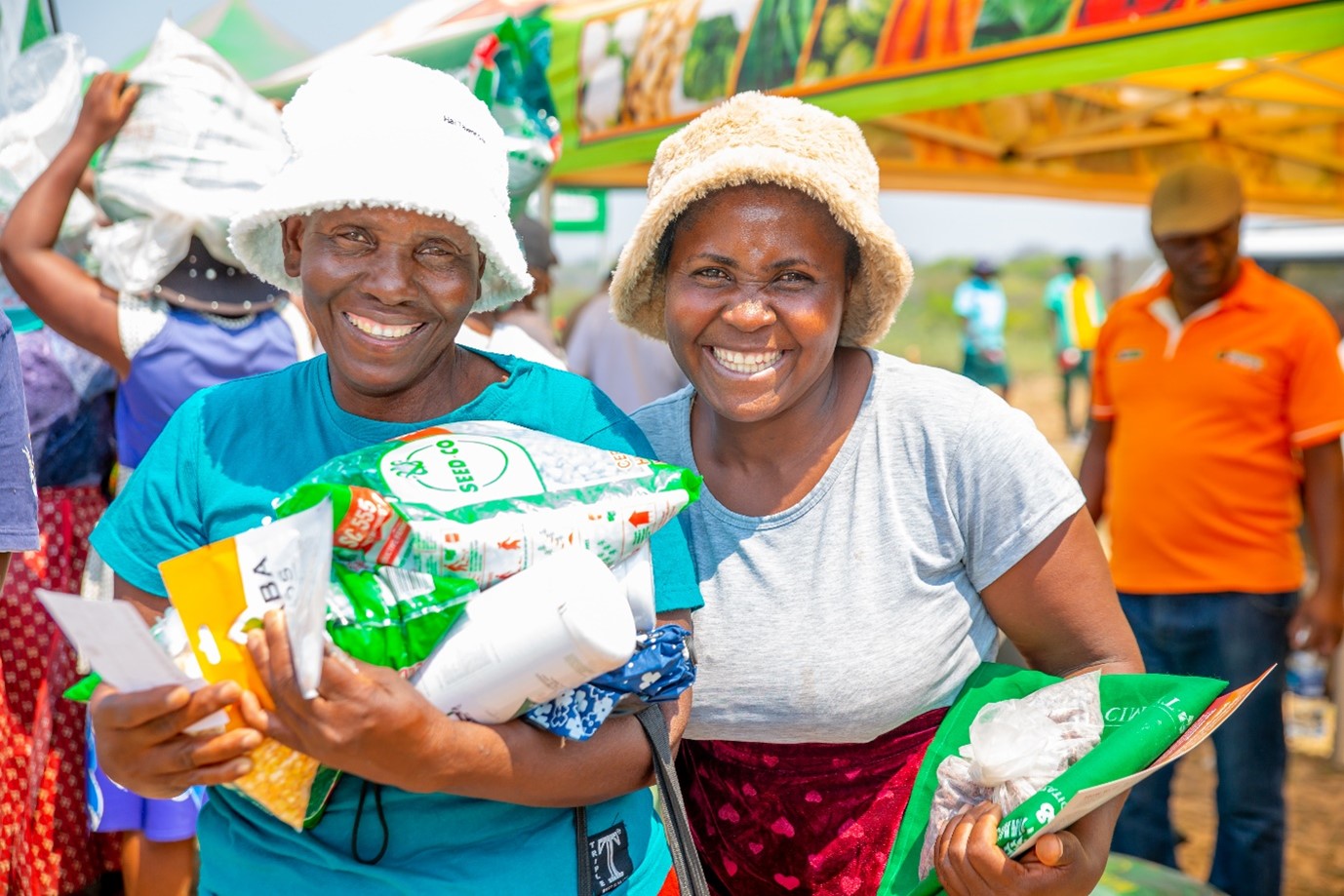Blogs
Soybean rust threatens soybean production in Malawi and Zambia
 Climate adaptation and mitigation
Climate adaptation and mitigation
Soybean production in sub-Saharan Africa is expected to grow by over 2% per annum to meet the increasing demand. However, as production increases, significant challenges caused by diseases, pests, declining soil fertility, and other abiotic factors remain.
Tackling fall armyworm with sustainable control practices
 Capacity development
Capacity development
Adopting sustainable and ecofriendly agricultural practices, sharing valuable knowledge, and providing farmers with effective tools and techniques can help mitigate the impact of fall armyworm in Zimbabwe.
Using social network analysis to assess collaborative networks: a case study from the genebank platform evaluation
 Innovations
Innovations
Source: CGIAR ()
SNA empowers CIMMYT to uncover and strengthen vital connections within agricultural research networks, fostering collaborative innovations for global food security.
Examining how insects spread toxic fungi
 Climate adaptation and mitigation
Climate adaptation and mitigation
CIMMYT leads international collaboration to monitor invasive pests attacking post-harvest crops and the propagation of toxic fungi.
New wheat varieties lauded for mitigating rust disease, increasing yield in Ethiopia
 Capacity development
Capacity development
Source: Milling Middle East & Africa ()
CIMMYT’s wheat varieties boost Ethiopia’s agriculture by combating rust and increasing yields, significantly enhancing food security.
Enhancing partnerships for agricultural development
 Capacity development
Capacity development
AID-I Tanzania partners make plans to step up activity implementation, achieve wider impact, and build resilience for larger populations in 2024.
CIMMYT scientists recognized for significant research impact
 Innovations
Innovations
Jill Cairns, José Crossa and Matthew Reynolds named as Highly Cited Researchers (HCR) in Clarivate’s 2023 Analysis.
Afriseed: How improved legume seed can help transform Zambia’s agrifood systems
 Climate adaptation and mitigation
Climate adaptation and mitigation
Afriseed and AID-I are helping smallholder famers in Zambia transition to improved, high-yielding legumes.
Tela maize will boost food sufficiency, create wealth in Nigeria – Stakeholders
 Innovations
Innovations
Source: Daily Nigerian ()
CIMMYT’s involvement in the TELA Maize Project has been instrumental in the development of new drought-tolerant and pest-resistant maize varieties.
Visit by Dr. Vijesh Krishna – CIMMYT
Source: Foundation for Agrarian Studies ()
Vijesh V. Krishna, Principal Scientist / Lead Economist of CIMMYT visited the Foundation for Agrarian Studies in Bengaluru.
Climate Change, Aha Moments, and the ‘Ps’
 Gender equality, youth and social inclusion
Gender equality, youth and social inclusion
Agriculture evolves slowly with farmers perfecting their practices over decades. However, the rapid pace of climate change necessitates a more urgent response
Every drop of water matters: Leading global research institutes ally to aid farmers in dry and saline ecosystems
 Capacity development
Capacity development
Two world-class research-for-development centers will work to raise food production and livelihoods in croplands where water is the defining constraint.
Gene Editing Boosts Heat-Resistant Wheat Hopes
 Innovations
Innovations
Source: Technology Networks ()
CIMMYT’s focus on gene editing, like the DMC1 gene study, is paving the way for wheat varieties that can withstand rising temperatures.
Transforming rural agriculture with improved seed and mechanization
 Capacity development
Capacity development
Attended by over 1,300 smallholder farmers, the fourth edition of the CIMMYT seed and mechanization fairs held in Mwenezi and Masvingo districts linked farmers with private sector companies.
China aids developing countries with agricultural science
 Innovations
Innovations
Source: ChinaDaily ()
CIMMYT, in collaboration with China, plays a critical role in the global initiative for germ plasm sharing.














